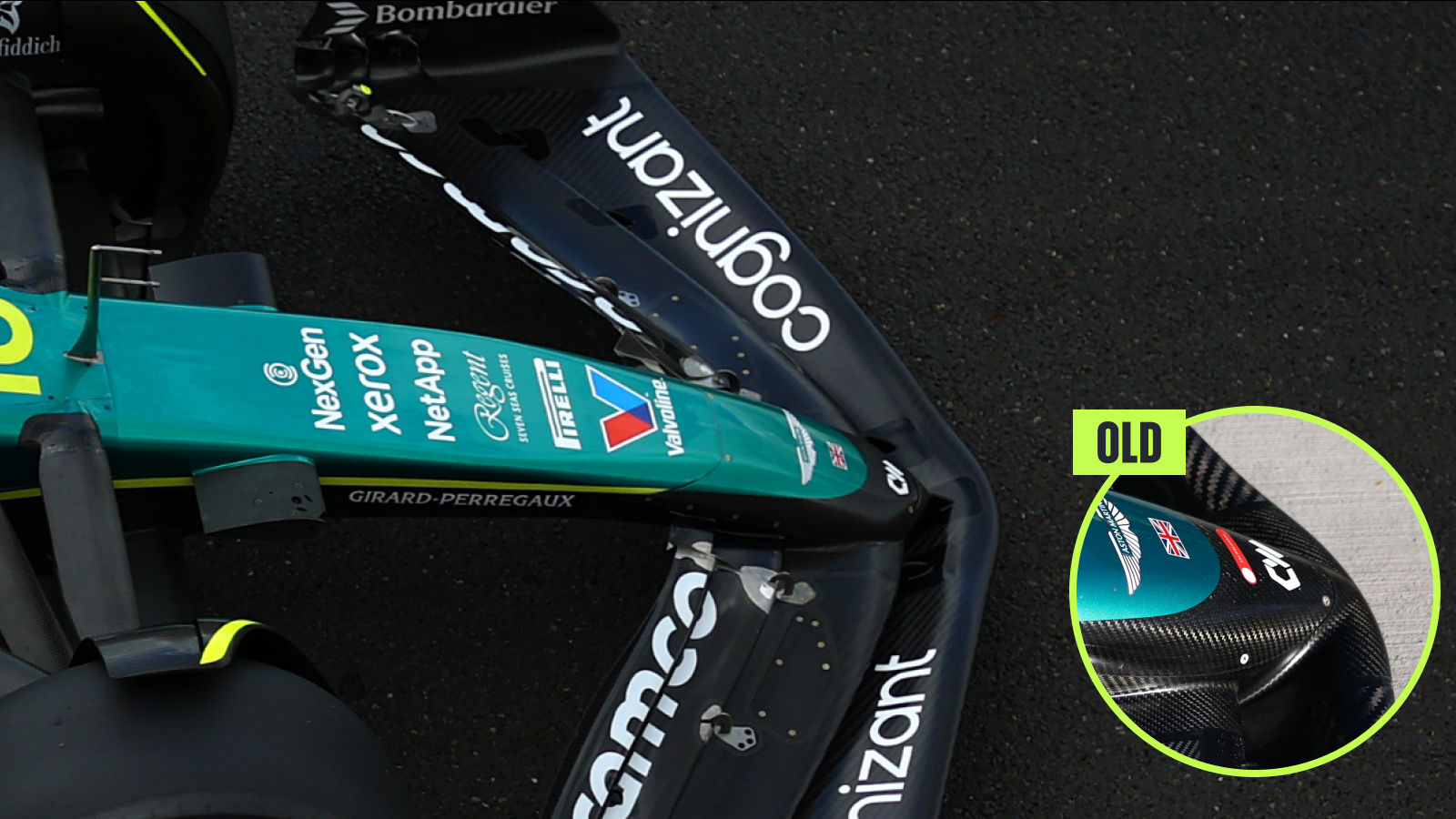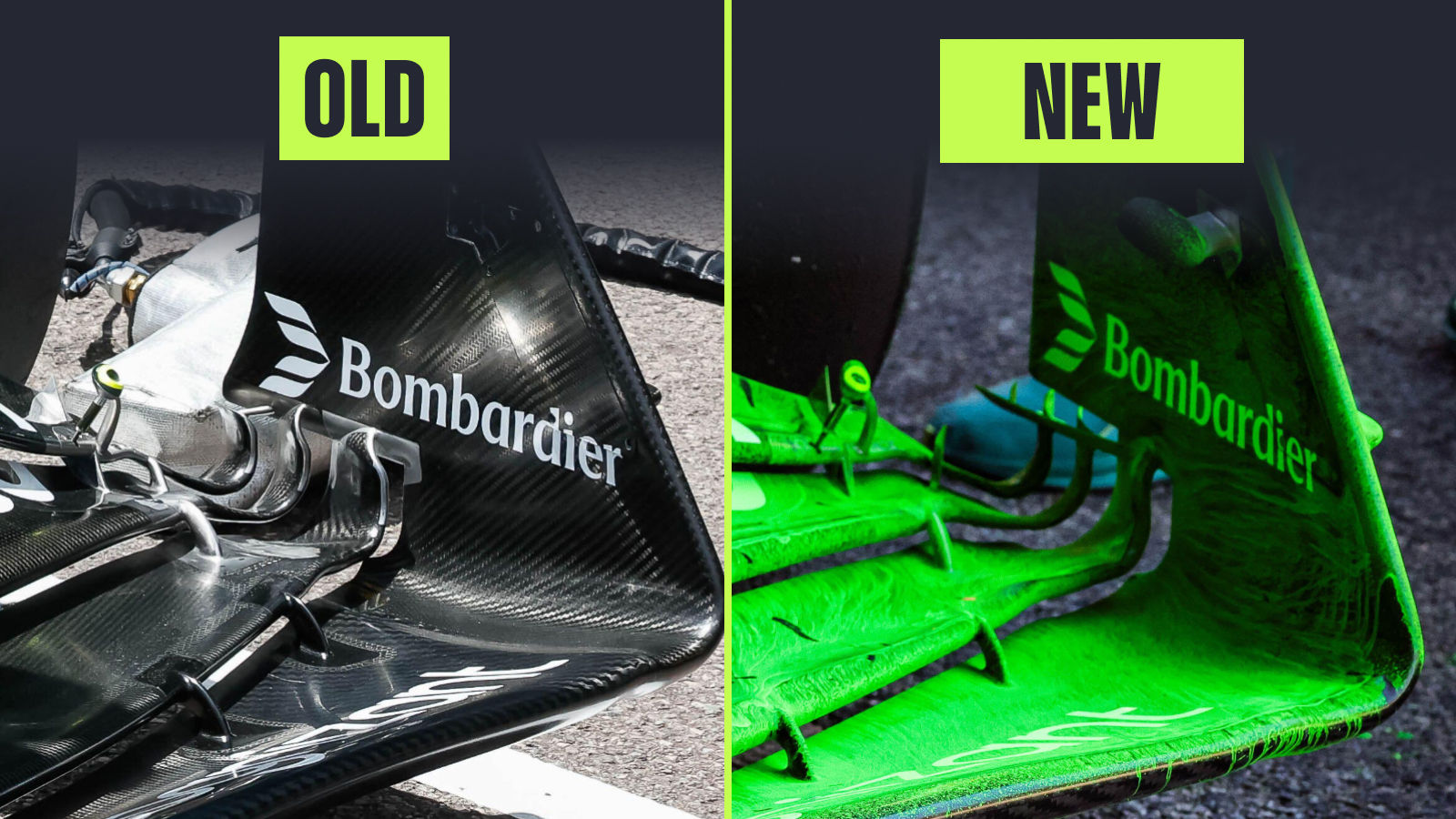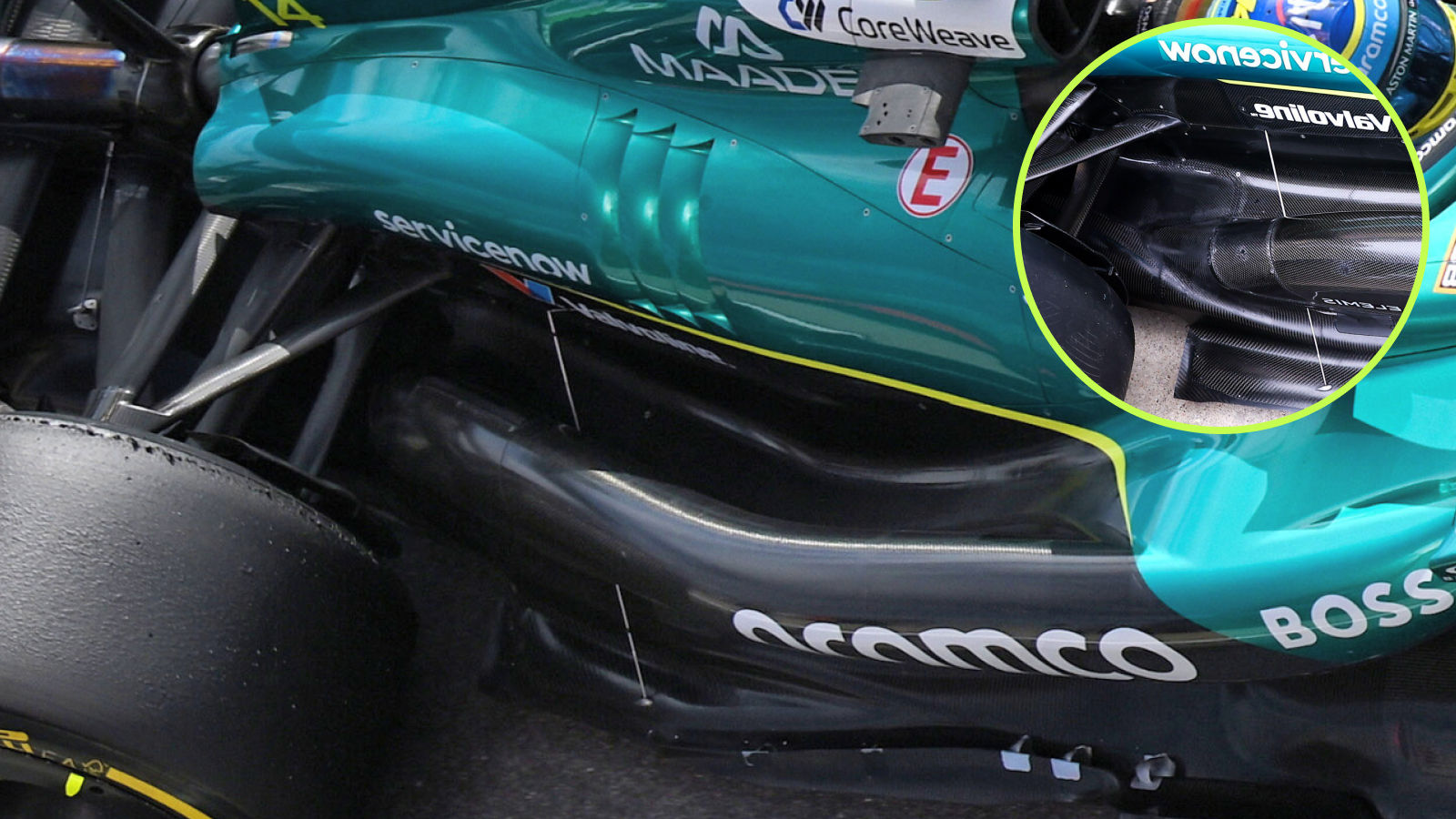Uncovered: The secrets behind Aston Martin’s performance boost

Aston Martin have continued to assess the raft of updates that they’ve introduced over the last few Grand Prix weekends and have cycled on and off the car for various reasons, before installing all of them on their cars in Hungary.
It’s an extensive list of components too, which includes new sidepod bodywork, floor and front wing, as the team look to validate the information provided by their new wind tunnel with data gathered on track.
Cumulative gains
And, whilst the list of parts introduced during this period might suggest that the team have shifted direction, the overall design philosophy remains intact.
Rather, this is more about optimising the design that the team already have, with the main design features nudged along, rather than being abandoned altogether.
The new front wing upper flap introduced this weekend is a follow-up component, used to increase downforce for the main front wing structure that was introduced at the Belgian Grand Prix but wasn’t raced.

The redesign of the Aston Martin front wing also goes hand-in-hand with a change of approach to how it’s fixed to the nose, with the team returning to a design similar to the one they had last season, whereby the tip sits back on the second element, rather than being stretched out to the front of the mainplane (old specification, inset).
This obviously has a bearing on the flow field around those components and justifies the subtle modifications made to the static flap sections beside the nose, which results in a similar readjustment to the geometry of the moveable flap sections beside.
Meanwhile, the brief dalliance that the design team had with the revised semi-detached flap section at the endplate juncture, introduced at the Spanish Grand Prix (below, right), also seems to be over, with the newer wing specification restoring the previous junction type (below, left).

The new floor and sidepod bodywork that was introduced at the British Grand Prix and raced by the team at Silverstone was subsequently abandoned for the Belgian Grand Prix but made a return in Hungary.
As team principal Mike Krack explains, this is due to the team looking to gather the necessary data to make an informed decision on its performance benefits at different circuit types –
“Silverstone is very specific. You know, we have only very high speed and very low speed. So there is not the medium speed range. I don’t have any doubt in it. I think it is giving us what we expect. We have the new wind tunnel, obviously, for a couple of months now, running the developments have really brought or behaved the way we have expected them to behave, which is very encouraging, and it is about getting more data, accumulating data, to reinforce the picture.”
More on Aston Martin’s F1 2025 season
👉 Uncovered: Aston Martin’s make-or-break upgrade ahead of crucial F1 2026 decision
👉 The results of the F1 2025 championship

The new sidepod layout works in conjunction with the new floor arrangement, owing to how the surfaces interact with one another. The new sidepod layout is much longer and taller than its predecessor (inset, above), which provides a different channel for the air to flow within their waterslide-style gullies towards the coke bottle region.
Meanwhile, that increased length shields that airflow’s passage for longer from the wake generated by the rear wheel and provides a different route for the airflow passing down along the sidepod and floor edge’s flank.
However, whilst the arrival of the updates have clearly helped improve the AMR25’s performance baseline, their drivers have been keen to point out that they generally perform better compared with their rivals when the car is set up with more downforce.
“Yeah, I think I mean more than the floors and stuff, I think it’s the track, you know, it really suits our car. I think what we put on the downforce, and conditions are cool and there’s not too much wind, you know, we’re kind of where we need to be for the performance of the car. And all weekend, it’s been there, you know, it’s been the window since the first lap of FP1,” said Lance Stroll.
Fernando Alonso and Stroll claimed a double points haul at the Hungaroring, the team-mates fifth and seventh respectively as they boosted the team back up to sixth place in the standings by a point ahead of Sauber.
Read next: The winners and losers from the F1 2025 season — so far

